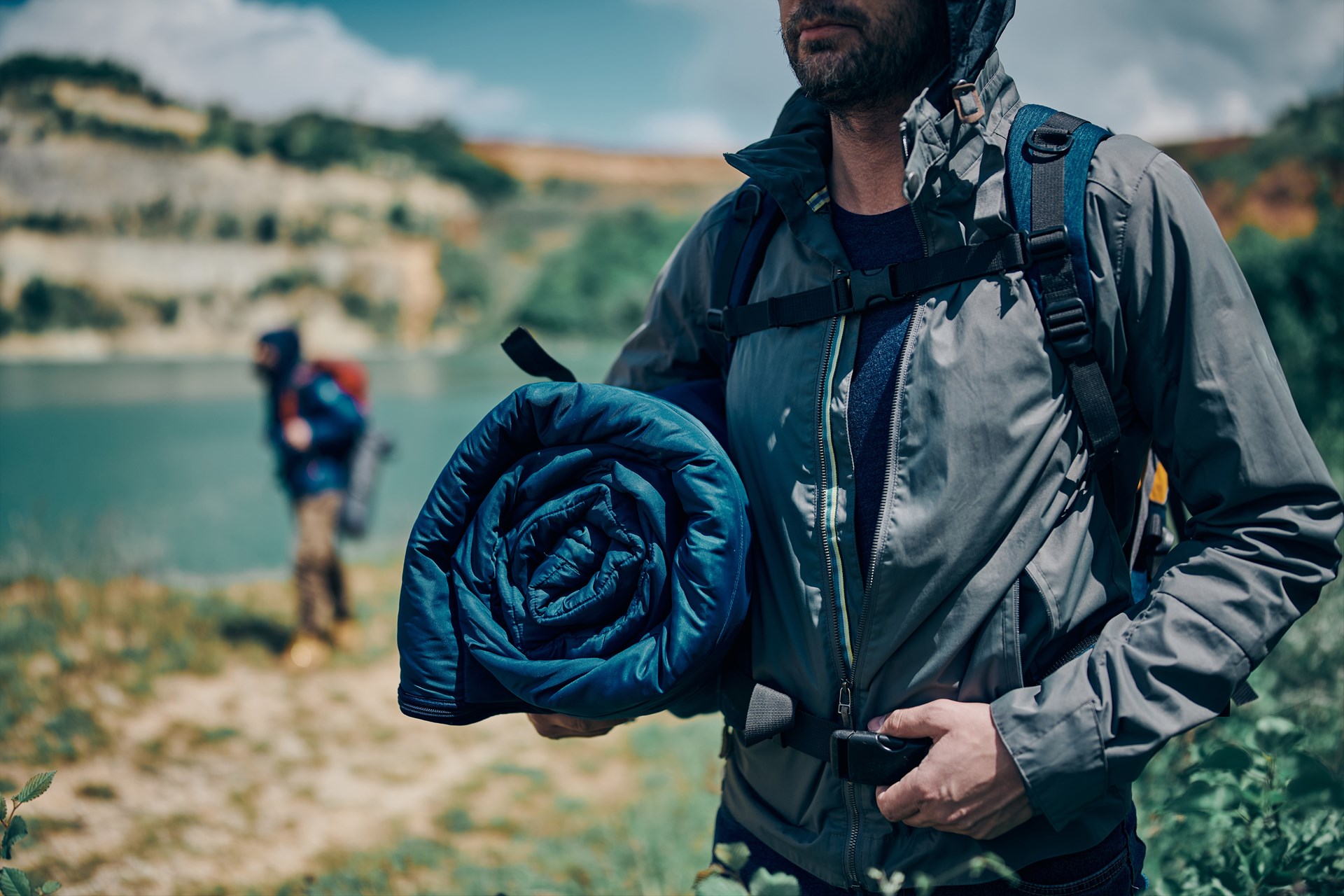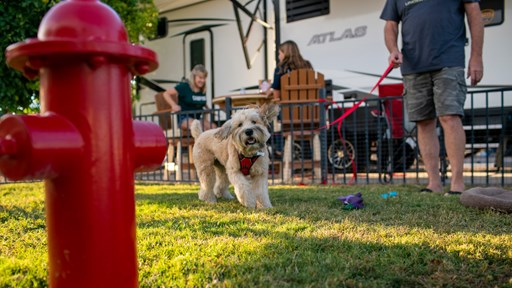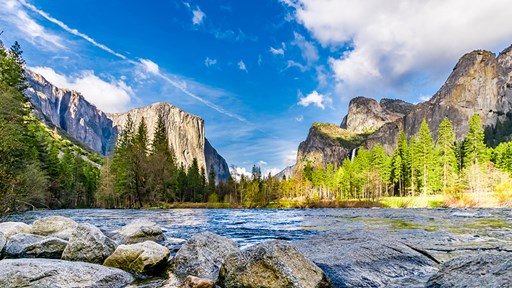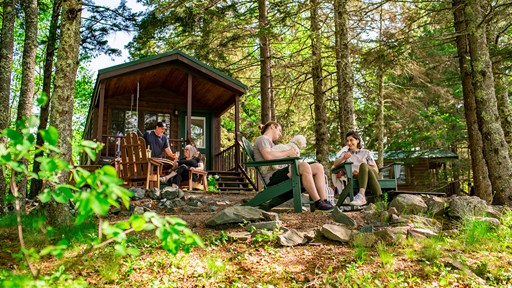No matter the season, camping is a fun adventure your whole family will love. There is nothing quite like sleeping outdoors in a tent or cabin. One essential component you do not want to forget is an appropriate sleeping bag. When you have the right equipment, cooler weather can make for an incredible camping experience. You do not have to worry as much about bugs or getting overheated on hikes, and the colder seasons are filled with their own wonder and beauty.
Depending on what time of year it is or where you are camping, chilly weather can impact your ability to get a good night’s sleep if you are not prepared. That is why it is essential to find the best sleeping bag for cold weather conditions. How do you know what to pick? When you visit your local outdoor retailer, there are tons of options — so many that you might feel overwhelmed. Most of the time, the staff will be nearby to answer your questions. However, it is always a good idea to go in with an inkling of what you want and need for your planned camping trips.
With that in mind, here are some tips for picking out a cold weather sleeping bag.
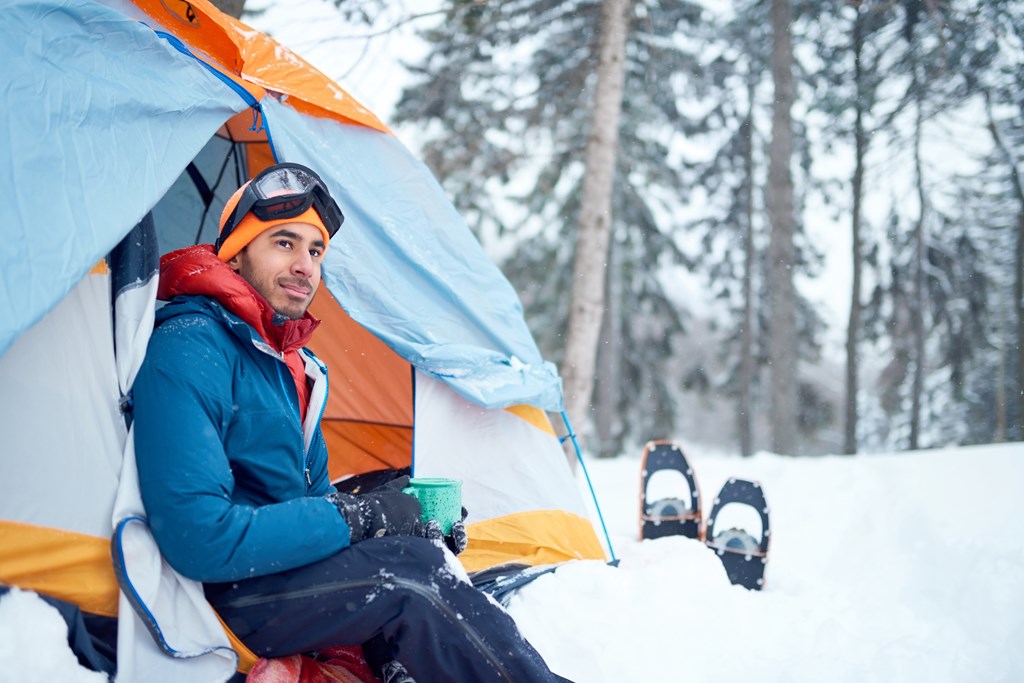
How to Choose the Best Cold Weather Sleeping Bag
When you are browsing online or sorting through options at your local camping store, there are so many different kinds of sleeping bags. Some focus on being lightweight for those avid outdoorsy types who prefer to fit all their gear in one pack. Others are more interested in keeping campers warm and cozy. You may notice that most sleeping bags nowadays showcase a brief description of that particular bag with all its characteristics. Here is your guide on how to translate these features into a comfortable night’s sleep.
1. Look at the Temperature Rating
The temperature rating shows the lowest temperature where you can use the sleeping bag and stay warm. For example, a temperature rating of 35° Fahrenheit means you can use it in any weather that is 35° Fahrenheit or warmer. Keep in mind that these temperature ratings assume that you wear warm clothes and have a sleeping pad to keep you elevated off the cold ground.
The temperature rating you need to stay warm may vary from person to person. Some campers get cold more quickly, while others get hot more easily. Ratings may also vary depending on the manufacturer. Generally, a cold weather camping sleeping bag should have a rating of 10° Fahrenheit or lower. Spring and fall sleeping bags can range from 10° to 35° Fahrenheit. Summer sleeping bags should have a rating of 35° Fahrenheit or higher.
2. Consider the Material Used for Insulation
When checking out sleeping bags, you will notice there are three main types of material used as insulation. Each has its advantages and disadvantages. Common insulation materials include:
- Synthetic: This insulation material typically uses polyester. It can save you money and stay warm even when wet. Synthetic sleeping bag insulation material is also relatively durable and hypoallergenic. Unfortunately, it is a little bulkier and harder to transport, as it does not pack down as small as other options.
- Goose-Down: This option costs more than synthetic but has better durability and warmth. You can also easily compress it down into a small pack. Unlike synthetic, this material will not insulate when wet.
- Water-Resistant Down: These goose-down sleeping bags have a water-resistant treatment to shield them against moisture. This material is probably your most expensive option, but it combines the portability of down with the benefits of staying warm even if your sleeping bag gets damp.
3. Choose Additional Features for Added Warmth
Other features influence how warm a sleeping bag keeps you. Before you hit that purchase button or check out at the store, here are some additional characteristics you may want to consider:
- Shape: The shape of a sleeping bag dictates how much warm air gets trapped around your body. The less space there is, the faster you can warm up and stay warm. The shape of a sleeping bag can either help with this process or hinder it. Roomier sleeping bags, like rectangular or barrel-shaped, give you more room to wiggle but may not keep you as warm. Mummy-shaped bags, on the other hand, are more restrictive but are great for colder climates.
- Hood: You lose a lot of heat through an uncovered head. Some sleeping bags come with a built-in hood with a drawcord, keeping your head nice and warm, along with the other parts of your body.
- Shell and Lining: The outside material of your sleeping bag is called the shell, while the inside material is the lining. A shell made with a water-repellent finish will ensure cold water does not soak into the fabric. The lining, on the other hand, should disperse your body’s moisture during the night.
- Pillow Pocket: Certain sleeping bags have a small pocket that you can convert into a pillow. Just stuff some soft clothes inside, and you have not only the comfort a pillow provides but also some added warmth for your head.
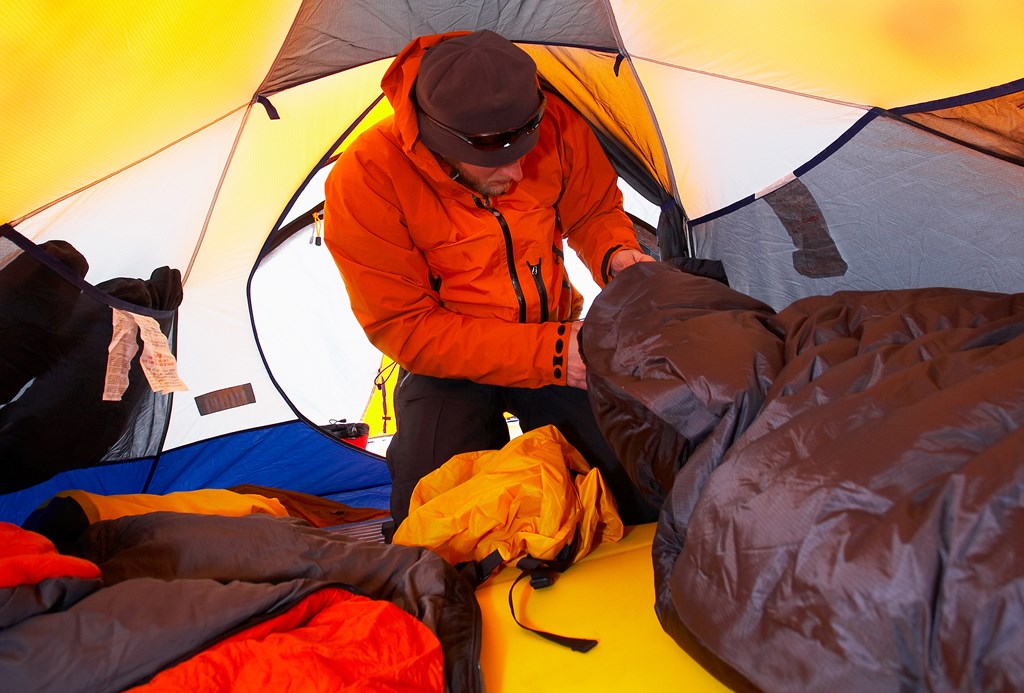
The Best Winter Camping Sleeping Bags
While you should have some background knowledge before you start shopping, you can also consult a list of top sleeping bags to better understand what you want. Here are a few top winter sleeping bag options.
1. Best Premium: Western Mountaineering Kodiak
This sleeping bag is more expensive than most but can keep you warm in temperatures as low as zero degrees. It is also relatively light and packs small due to the goose-down fill.
2. Best Synthetic: Mountain Hardwear Shasta 0F/-18C
The Mountain Hardwear Shasta keeps you warm in temperatures as low as zero degrees Fahrenheit. It also features an affordable price and has insulation from recycled materials.
3. Best Roomy: Nemo Sonic Down
While a tighter sleeping bag can better trap heat, it may not be ideal for all sleepers. Try this sleeping bag if you prefer a roomier option that keeps you warm.
4. Best Lightweight: Western Mountaineering Versalite
This two-pound sleeping bag is good for backpackers seeking to reduce weight. It comes in various size ranges to fit different campers. Its lightweight design means it works better for mild winter temperatures.
5. Best Features: Therm-a-Rest Polar Ranger
If you want a sleeping bag with everything, this option has a temperature rating of -20° Fahrenheit and side vents for better temperature control. It also has an interior pocket for storage.
Plan Your Next Camping Trip at KOA
Camping at KOA means a great experience, no matter what time of year. From Tent Sites to lodging options like Camping Cabins, your whole family can enjoy all the excitement of the great outdoors combined with the convenient amenities you will only find at a KOA campground. Go ahead and plan your cold weather getaway and make your reservation at KOA today.
About the Author: Kampgrounds of America
Kampgrounds of America is the largest system of open-to-the-public campgrounds in the world, with over 500 locations across the United States and Canada. Founded in Billings, MT in 1962, KOA’s family of campground brands – KOA Journey, KOA Holiday and KOA Resort – today serve more than a million camping families each year. KOA is dedicated to “connecting people to the outdoors and each other” by providing people with a variety of camping experiences and the information they need to make the most of their camping trip. Read more of their camping and travel resources by visiting KOA.com/blog.



















